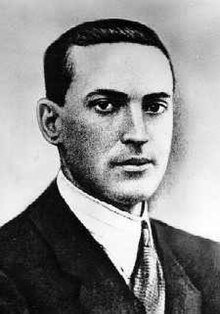Developmental psychology/Chapter 5/Thinking During Early Childhood
Piaget's Preoperational Thought[edit | edit source]

After the sensorimotor stage, we enter the individualistic preoperational intelligence stage (for 2yrs-6yrs) of cognitive development.
The children in this stage progress from thinking in solely via "senses and motor skills" to "symbols", known as symbolic thought. This is where words/objects can stand for a distinct entity, either imaginative or out of sight. This thinking process explains animism, the idea that nonhuman animals have human characteristics and natural objects are alive. Animism gradually decreases as the years go on, either by age 10 or earlier.
Piaget found 4 limitations that prevented children from thinking logically during preoperational thought:
- Centration - Focusing on one part of a situation and excluding the rest (lions and tigers are not cats). This is a type of egocentrism, where egocentric kids understand the world solely through their perspective.
- Focus on Appearance - A child ignores traits that are not apparent. An example is a girl worrying that she's turning into a boy by getting her hair cut short.
- Static Reasoning - A child thinks that nothing will change and everything remains the same. For example, a child can't understand the reality that their parents were once small children like them!
- Irreversibility - A child thinks that nothing can be reversed. A young child may get angry at their mother for adding tomatoes into a sandwich. They might reject the food even after the tomato has been removed.
Children also exhibit behaviours consistent with conservationalism, where children think that something has been changed if their appearance has changed. If two identical pencils are present and the top pencil is pushed farther to the right, children during the preoperational thought stage will erroneously believe that the one pushed towards the right is longer despite them being the same length.
They focus (centration) on what is apparent (focus on appearance), believing that the present conditions (static) cannot be reversed (irreversibility).
Some signs of logical understanding are apparent in kids aged 4, maybe through gestures or movements signifying they're understanding logic before they can express it in words.
Vygotsky's Social Learning[edit | edit source]

Maybe due to Vygotsky's diverse background residing in a country (Russia) spanning two continents - his cognitive stage focused on the sociocultural context. Since children are naturally curious and explorative, they will ask many questions or do many things that will be guided by a mentor (guided participation). The mentor reacts based on his perceptions aka his culture, which shapes their thinking process.
According to Vygotsky, children learned because of their mentors in these ways:
- Present challenges
- Offer assistance but not domination
- Teach critical knowledge
- Provide motivation
Scaffolding[edit | edit source]
Vygotsky believed all individuals learned stuff using their zone of proximal development, otherwise known as ZPD. The ZPD is an intellectual space where new thoughts and skills can be mastered. Since this isn't "perfecting", but rather, "learning", teachers can provide scaffolding - support for a certain time period that matches the user's needs and abilities, guiding them through the learning process. What is important in ZPD is joint engagement (looking both ways before crossing the street), where there is constant interaction and learning between the child and the mentor.
Not all scaffolding is planned, like in the case of over imitation - children copy useless means or customs (ex: waving your hands around a box before opening it).
Language is also important when it comes to teaching a child. Children develop private speech, which is when they talk to each other when children talk aloud (reading a book out loud, for example). Language also encourages active oral communication, which advances thinking.
STEM learning (Science, Technology, Engineering, Math) also plays its own role. Interest in STEM subjects occurs at a young age when children learn about numbers and science. Understanding how an object fits into another object leads to math skills (spatial awareness), which is spawned by scaffolding and explanations provided by mentors (get the Lego sets!).
- Age 3/4: Children can understand numbers, memories and routines.
Executive Function is when the child learns to remember, plan, control themselves and execute actions (ex: ignoring distractions and focusing on the plan at hand). The three components that fit executive function are:
- Working memory
- Cognitive flexibility
- Inhibitory control
This is a better estimator of later learning vs. a child's age/language ability.
Children's Theories[edit | edit source]
Although both psychologists believed differently regarding children's cognitive growth, with Piaget looking into brain maturation vs. Vygotsky's emphasis on mentors, they both agree that even children can come up with their own theories, originating from their efforts to learn and study the world around them.
- Theory-Theory - Children naturally create theories to explain the world around them.
- Theory of Mind - A person's theory on what another person is thinking. Children, before the age of 4, realize that not everyone might be thinking the same as they are. The false-belief task is used to test if a child has a theory of mind or not.